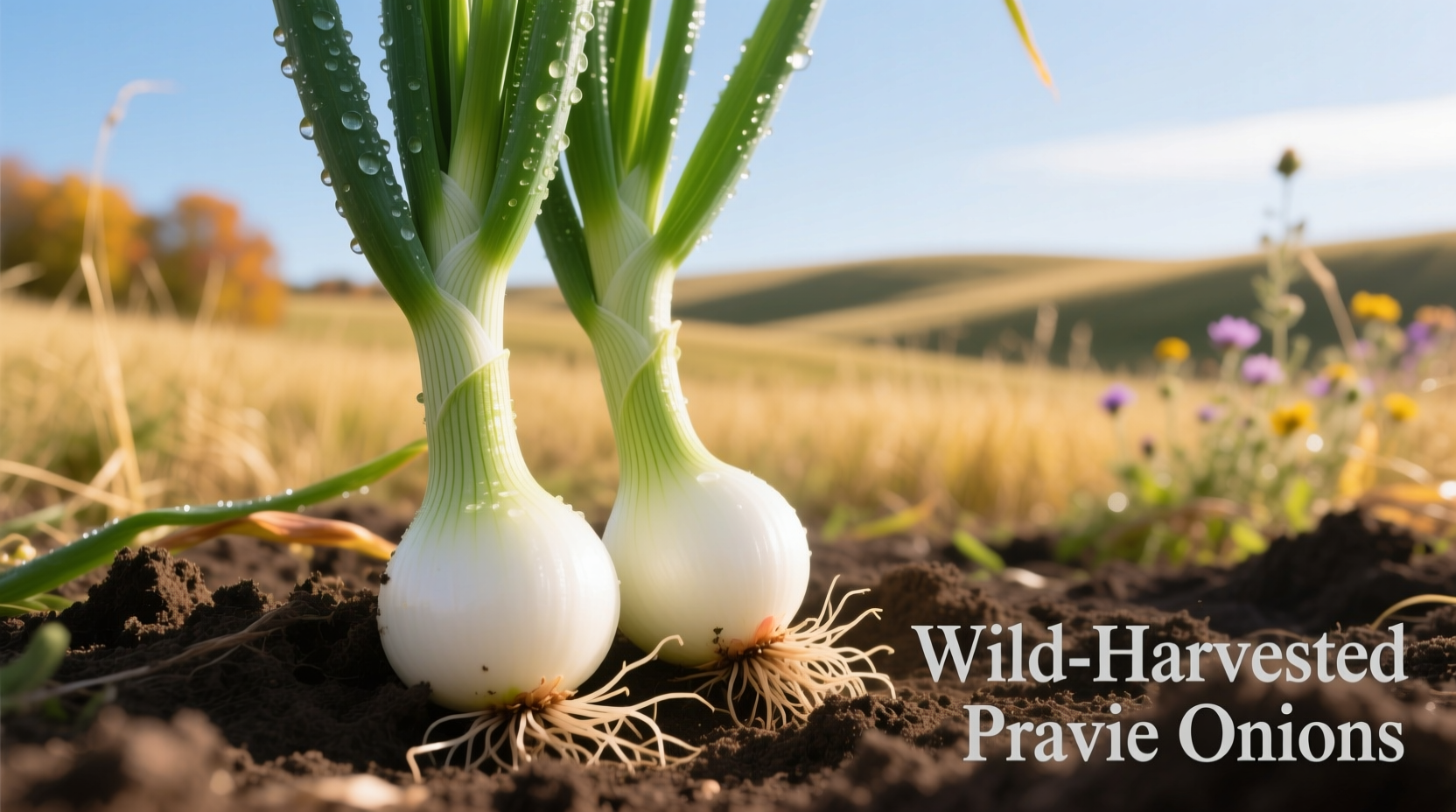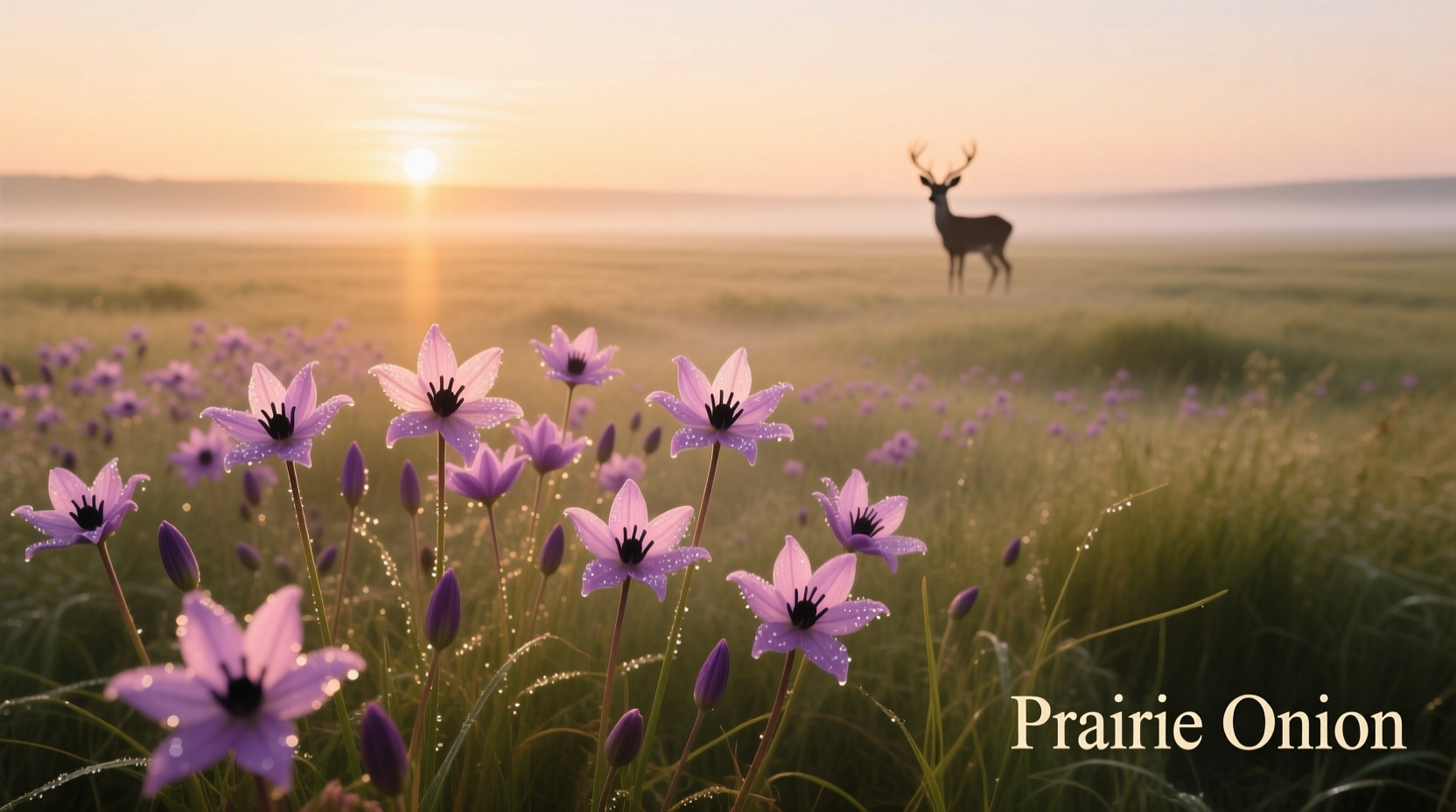Prairie onions (Allium textile and related species) are edible wild plants native to North American grasslands, featuring slender green stalks, small bulbs, and a distinctive onion-garlic flavor. They're safe to eat when properly identified, with peak harvesting season from early spring through early summer across the Great Plains and Midwest regions.
Discovering Nature's Hidden Gem in the Grasslands
Imagine hiking through open prairies in early spring and catching that unmistakable onion scent wafting from the soil. Prairie onions—nature's flavorful gift to foragers and chefs alike—offer a unique culinary experience that connects us to North America's indigenous food traditions. This comprehensive guide reveals everything you need to know about identifying, harvesting, and using these wild treasures safely and sustainably.
What Exactly Are Prairie Onions?
Prairie onions, primarily Allium textile (also known as nodding onion or wild garlic), belong to the Allium genus that includes cultivated onions, garlic, and chives. These hardy perennials thrive in the native grasslands across North America, particularly in the Great Plains region from Canada to Texas.
Unlike their cultivated cousins, prairie onions grow naturally without human intervention, developing slender green stalks (scapes) and small, elongated bulbs that pack an intense flavor punch. Their distinctive characteristic? When crushed, they emit that unmistakable onion-garlic aroma that helps differentiate them from potentially dangerous look-alikes.

Where and When to Find These Wild Delicacies
Understanding the seasonal rhythm of prairie onions is crucial for successful foraging. These plants follow a predictable pattern that aligns with the natural cycles of North American grasslands:
Prairie Onion Seasonal Timeline
- March-April: First green shoots emerge as temperatures warm
- May: Peak harvesting season for both greens and developing bulbs
- June: Bulbs reach full size; flowers begin to form
- July: Seed pods mature; optimal time for seed collection
- August-February: Dormant period underground
According to the USDA Plants Database, prairie onions flourish in well-drained soils across prairie ecosystems, particularly in areas with full sun exposure. They're commonly found in undisturbed native grasslands, along hiking trails through open fields, and sometimes even in restored prairie habitats within urban areas.
Safe Identification: Avoiding Dangerous Look-Alikes
Proper identification is non-negotiable when foraging for prairie onions. The most critical safety feature? The unmistakable onion scent when any part of the plant is crushed. Without this aroma, you should not consume the plant.
| Feature | Prairie Onion (Safe) | Death Camas (Dangerous) |
|---|---|---|
| Smell | Distinct onion/garlic aroma | No onion smell; sometimes unpleasant odor |
| Leaves | Hollow, cylindrical, grass-like | Solid, flat, grass-like |
| Flowers | Pink to purple spherical clusters | White to cream star-shaped flowers |
| Bulb | Small, elongated, papery covering | Round, fleshy, no papery covering |
| Stem | Hollow | Solid |
The University of Minnesota Extension emphasizes that death camas (Zigadenus venenosus) is the most dangerous look-alike, containing toxins that can cause severe illness. Always perform the smell test before harvesting—prairie onions will immediately release that characteristic onion scent when crushed.
Sustainable Harvesting Practices
Responsible foraging ensures these wild plants remain available for future generations. Follow these ethical harvesting guidelines:
- Harvest only what you need: Take no more than 5-10% of any patch you find
- Use the "rule of thirds": Harvest one-third of the greens, leave one-third for regrowth, and one-third for wildlife
- Never dig up entire patches: Harvest individual plants with a small trowel, leaving neighboring plants undisturbed
- Check local regulations: Some protected areas prohibit plant harvesting
The Native Plant Society of Texas recommends harvesting only when plants are abundant and avoiding areas near roadsides where soil contamination may be present. Remember that prairie ecosystems are fragile—your actions today impact biodiversity for decades to come.
Culinary Applications: Transforming Wild Harvests into Gourmet Delights
Prairie onions offer a complex flavor profile that combines the sharpness of wild garlic with the sweetness of young cultivated onions. Their culinary versatility makes them valuable to both professional chefs and home cooks seeking authentic, locally-sourced ingredients.
Flavor Characteristics and Best Uses
Understanding when to use different parts of the plant maximizes your culinary success:
- Early spring greens: Mild, delicate flavor perfect for salads and garnishes
- Developing bulbs (May): Balanced onion-garlic flavor ideal for roasting and sautéing
- Flower buds: Subtle onion flavor that adds visual appeal to dishes
- Mature bulbs: Stronger, more pungent flavor suitable for pickling or long-cooking dishes
Professional chefs note that prairie onions have a more complex flavor profile than cultivated varieties, with subtle grassy notes that reflect their native prairie environment. Their intensity means you'll often need less than you would with store-bought onions.
Simple Preparation Techniques
Maximize flavor while preserving nutrients with these preparation methods:
- Raw applications: Finely chop greens for salads, compound butters, or as a garnish
- Sautéing: Cook bulbs gently in olive oil to mellow their sharpness
- Roasting: Whole bulbs develop sweet, caramelized notes when roasted slowly
- Pickling: Preserve the harvest with a simple vinegar brine for year-round use
When substituting prairie onions for cultivated varieties in recipes, start with half the amount called for and adjust to taste—their flavor intensity varies based on growing conditions and harvest time.
Nutritional Benefits of Wild Foraged Onions
Research from the USDA FoodData Central shows that wild alliums like prairie onions contain higher concentrations of certain beneficial compounds compared to cultivated varieties. These plants develop enhanced phytochemical profiles as they adapt to their natural environments without agricultural intervention.
Prairie onions are particularly rich in:
- Sulfur compounds with antioxidant properties
- Vitamin C (higher than many cultivated onion varieties)
- Dietary fiber
- Various flavonoids with potential health benefits
Indigenous food traditions have long recognized these nutritional benefits, incorporating wild onions into traditional diets for both flavor and health purposes. Modern research continues to validate these traditional uses, highlighting the value of maintaining these wild food sources.
Preserving Your Harvest
Extend the enjoyment of your prairie onion harvest with these preservation methods:
- Refrigeration: Store unwashed bulbs in a paper bag in the crisper drawer for 2-3 weeks
- Freezing: Chop greens and freeze in ice cube trays with olive oil for cooking
- Drying: Hang whole plants in a cool, dry place for long-term storage
- Pickling: Create flavorful preserves that last 6-12 months in the refrigerator
For long-term storage, many experienced foragers recommend creating prairie onion pesto or infused oils that capture the essence of the harvest for use throughout the year. Always follow proper food safety guidelines when preserving wild foods.
Respecting Indigenous Knowledge and Traditions
Prairie onions have been an important food source for Native American tribes across the Great Plains for centuries. Many tribes, including the Lakota, Cheyenne, and Pawnee, incorporated these wild plants into their traditional diets and medicinal practices.
When foraging on public lands, it's important to recognize that these plants hold cultural significance beyond their culinary value. The Native American Food Sovereignty Alliance encourages respectful harvesting practices that honor the deep relationship between indigenous communities and native plants.











 浙公网安备
33010002000092号
浙公网安备
33010002000092号 浙B2-20120091-4
浙B2-20120091-4